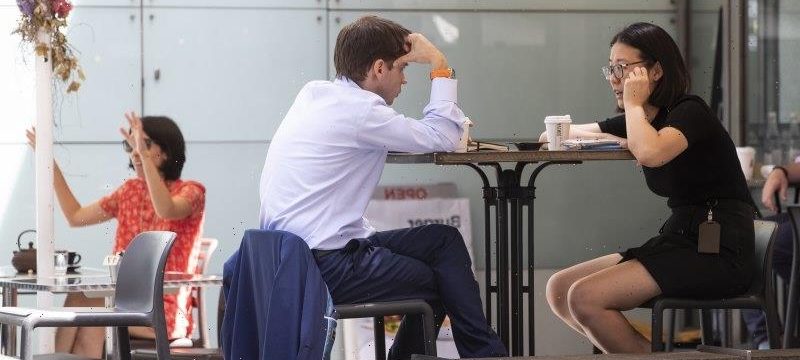Australia’s gender pay gap worsened as the nation recovered from the coronavirus pandemic, with wages surging in the male-dominated construction industry ahead of the latest lockdowns.
The Workplace Gender Equality Agency has estimated the new national gender pay gap at 14.2 per cent, an increase of 0.8 percentage points over the last six months, based on biannual Australian Bureau of Statistics average weekly earnings data. The pay gap was previously 13.4 per cent.
The gap between what men and women earn is growing.Credit:Louie Douvis
Women working full-time earn $261.50 a week less than their male counterparts on this measure. The ABS records women’s average weekly full-time earnings at $1575.50 and men’s at $1837. The calculation does not compare like-for-like roles and instead looks at women’s collective position in the paid workforce.
The increasing gap was driven mainly by a rapid rise in men’s pay, at 1.8 per cent, while women’s increased 0.9 per cent. This was the second time since 2014 men’s earnings had rapidly outpaced women’s and the change emerged in the early months of the year when the economy was rapidly recovering before the latest lockdowns.
Workers in the arts and recreation industry had a 5.4 per cent boost in average earnings in the six months to May 2021 after suffering declines during the pandemic, while the construction industry had a 4 per cent increase on the back of significant government programs to increase activity in the building sector.
Women were hardest hit at the height of the pandemic and a range of economists, think-tanks and analysts encouraged the federal government to focus funding on female-dominated industries, such as childcare, rather than solely traditional recovery projects such as transport infrastructure and residential construction.
WGEA director Mary Wooldridge encouraged all workers to question the pay gap in their workplaces to help bridge the divide on Equal Pay Day. This has been set for August 31, based on women needing to work an extra 61 days after the end of the financial year to keep up with men’s annual pay.
“Equal Pay Day is an ideal opportunity to remind employers around the country that one of the key levers of change is through gender pay audits. These audits help employers identify and address discriminatory pay, to ensure that women are equally compensated and valued,” Ms Wooldridge said.
“Research proves that regular audits close pay gaps faster,” she said.
She said women’s average full-time wages were lower than men’s in every industry and occupation in Australia and, on current trends, the gap would take 26 years to close.
“The gender pay gap signifies that the work of women is still not treated as being of equal value to that of men,” she said.
“Start a conversation with your colleagues and friends about the gender pay gap, what it means to you and to them and how you can help to close it. We can all work together to eliminate gender pay discrimination,” she said.
The Morning Edition newsletter is our guide to the day’s most important and interesting stories, analysis and insights. Sign up here.
Most Viewed in Politics
From our partners
Source: Read Full Article
